---------------------------------------------------------
If you are lucky enough to live near an ocean, you likely are familiar with foraging for fresh fish and shellfish. But there is another vital food you are probably looking right through while chasing crabs. Natural sea salt is literally all around you while you wade through the waters and is easier to harvest than you might think!
Sea salt is harvested by evaporating the ocean water away and generally has little to zero processing involved beyond heat. Major sea salt manufacturers pump seawater into huge shallow “ponds” and allow the sun to evaporate the water. Table salt is mined from underground salt deposits and is heavily processed, removing most of its natural minerals.
Table salt also has anti-clumping additives added. There are actually over a dozen additives that are allowed to be added to table salt! Sea salt has the advantage of containing dozens of natural trace minerals which are not only good for you, but add flavor to your dishes. Because sea salt can be used unrefined, it allows it to retain its natural mineral content and major electrolytes like sodium, magnesium, calcium, and potassium.
Check water quality first
Before harvesting seawater, be sure the body of water you are using is not polluted. If it is safe for swimming & fishing, it should be fine for sea salt. Stay away from dock areas where boats are moored. The state of Massachusetts, where I live, tests beach water very regularly and posts the results online click here to visit. Check online to see if your state or area does the same.

Materials you will need:
*clean 5 gallon bucket with lid & handle
*heavy rope (if you are collecting from a pier or bridge)
*large stockpot (I use a 6-quart pot)
*baking sheet or tray
Collecting the Water
If it is warm enough you can wade right into the water, dip your bucket, and head on home. Easy peasy! If you live in the north where much of the year the water is chilly, you will want to find a bridge or pier for collecting your water. Tie a rope to the bucket’s handle and lower it in. A little more work, but it allows you to get salt whenever you need it. I also prefer to process seawater when it is not humid which leaves summer months out. Water quality also tends to be the best in the winter when humans are not swimming.
After you collect your water, be sure you put the lid on nice and tight so it won’t spill on the car ride home!
Harvesting the Salt
When you get home, let the bucket sit for about an hour. This will let any sand settle to the bottom. Bits of seaweed will float to the top, scoop them out. When you are ready to use it, don’t pour from the bucket into the pot or the settled debris will just get stirred up. Scoop the water with a cup into your stockpot. Fill it right to the very top!
Put the stockpot on your stovetop, turn it on high, and let it boil. As it boils, the water will evaporate. This is why I prefer to harvest salt when it’s not humid out. You are essentially adding dozens of cups of water into the air! If you must boil during the hot humid summer months, it would be best to boil the water outside with a portable propane burner. The boiling will take a long time. You don’t need to be standing over it but plan on it taking about 5-7 hours for a 6-7 quart pot, so don’t do it on a day when you have a ton of errands to run!
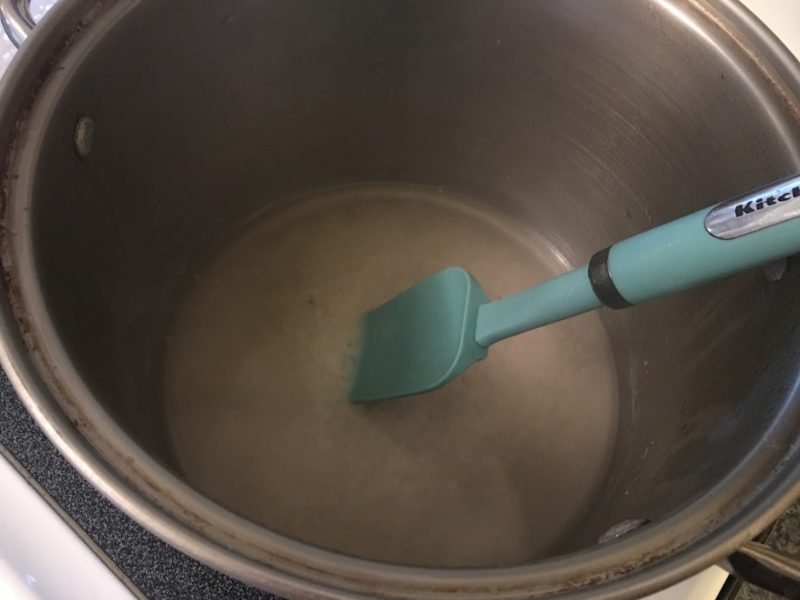
Once you get down to about an inch or so of water, you will have to start paying a little more attention. Turn the heat down to low. If you keep the heat up too high, you will end up with burnt crystallized salt. Stir the mixture every 10 minutes or so.
As more and more water evaporates out, you will see something resembling salt. When it gets to this point, you will want to keep stirring it constantly.
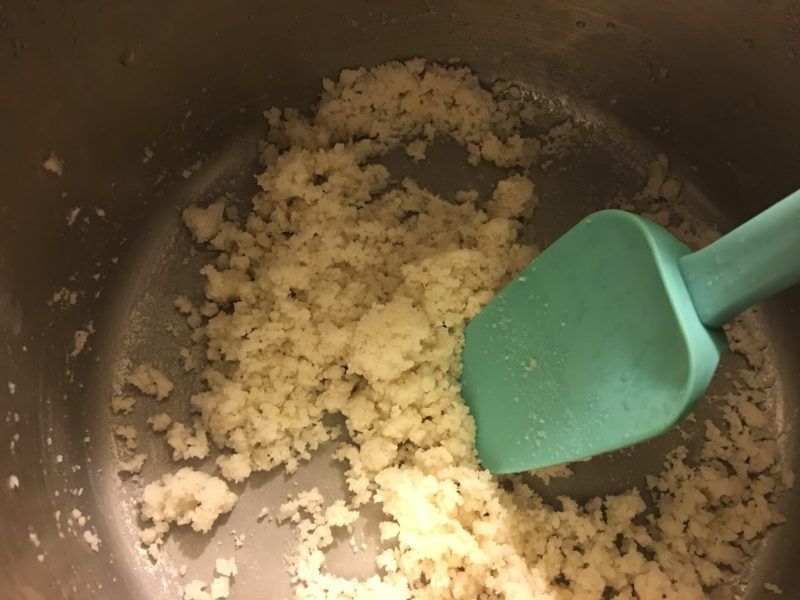
When you feel like you have gotten the majority of the water out, scoop the salt onto a flat tray or baking sheet. Spread it out as much as possible. I like to put a double layer of paper towels down under the salt to help wick away excess moisture.
Let the salt finish drying for about a week. You certainly can use it now, but it is easier to store & use when completely dried.
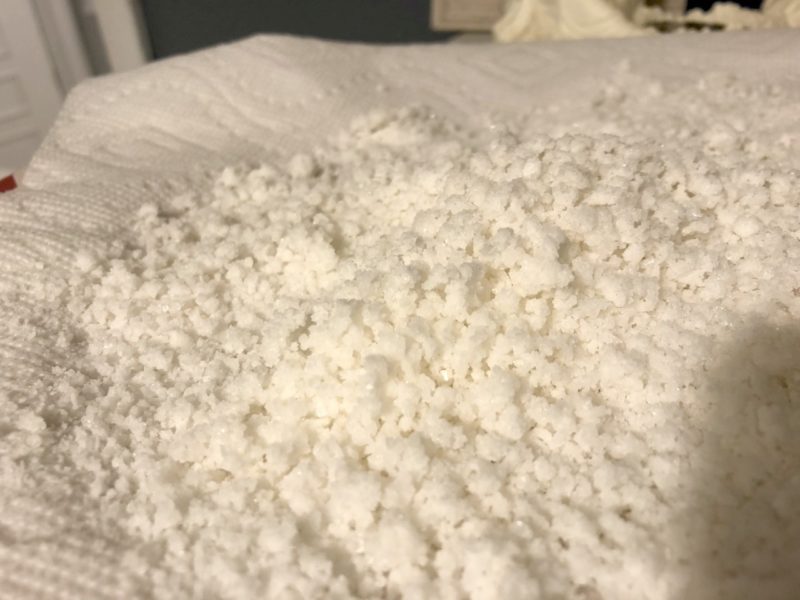
Using the Salt
That’s it! Super easy right? The product you are left with now is probably pretty coarse. If you like coarse salt, you are good to go, store it in an air-tight container. Alternatively, you could put it in a salt grinder to grind up as needed.
If you want finer-grain salt, you can also put it in the food processor for a few pulses.
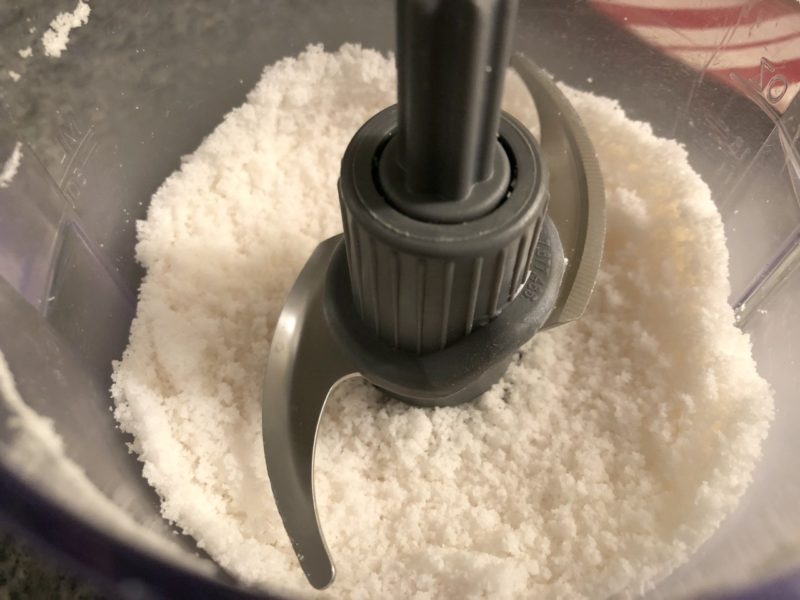
The amount of sea salt you are going to get from this can vary widely depending on the salinity of your local water. I find even using the same source every time I get different amounts of salt depending on the tide levels and time of year. Generally, when I boil a full 6-quart pot of water I expect to get anywhere from 7-10 ounces of finished salt. The sea salt I harvest is definitely more flavorful than any I have bought in the store, so a little goes a long way!
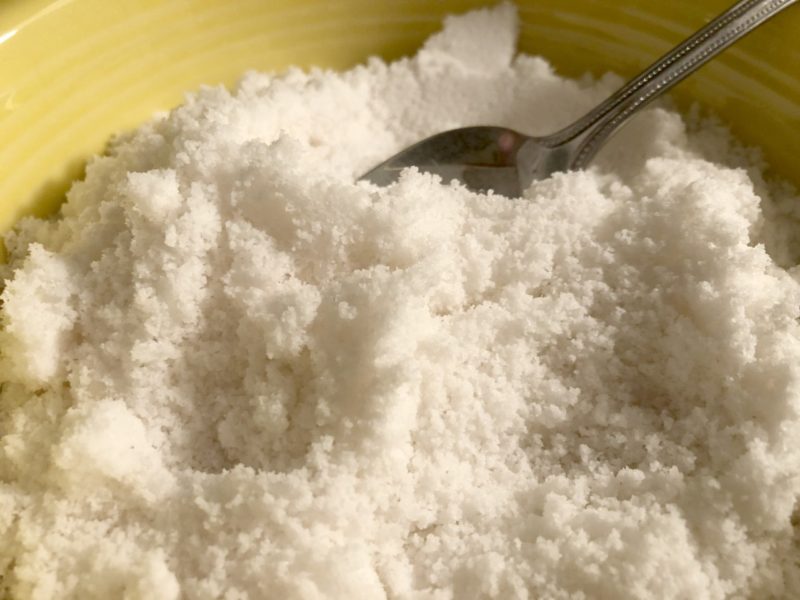
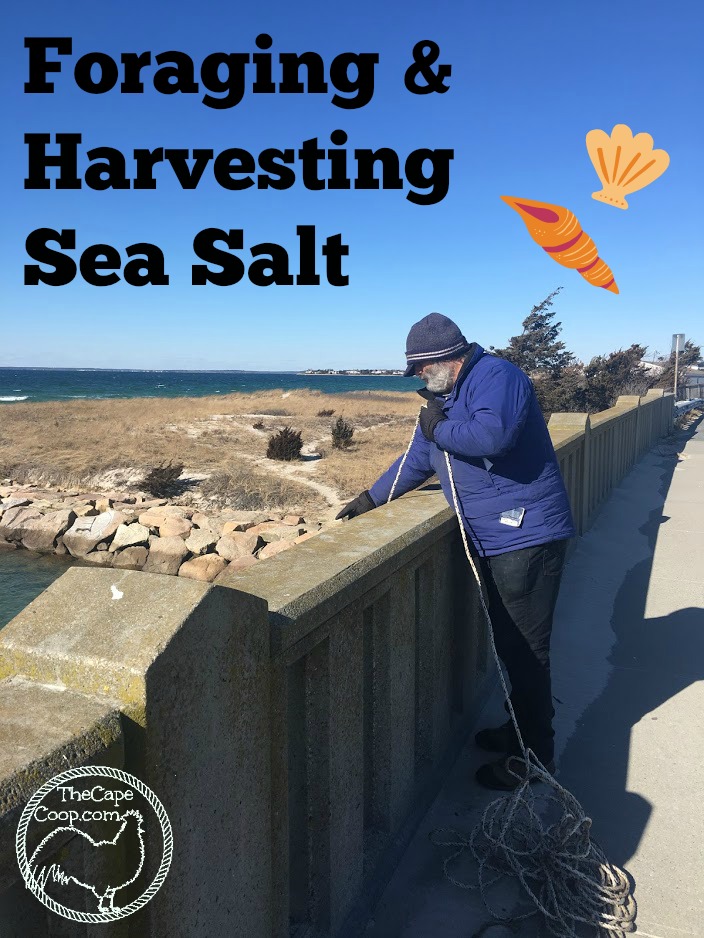

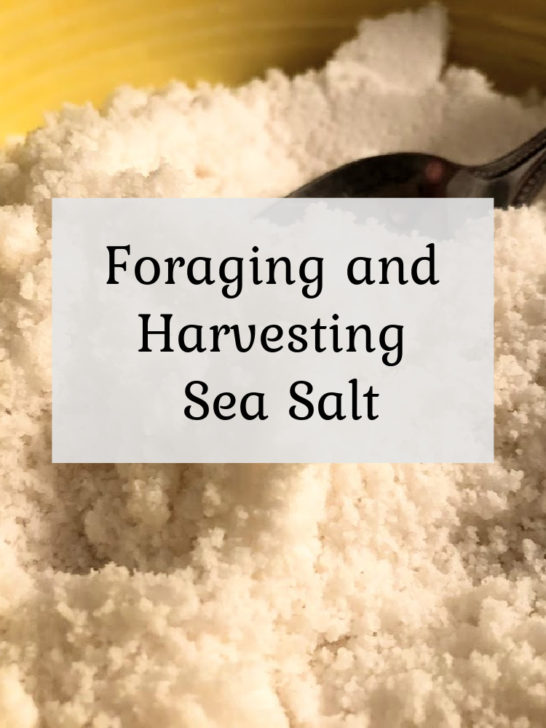

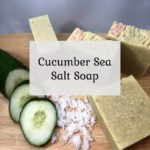


Doreen
Sunday 8th of September 2024
Even if the water is ok to swim in, aren't there other things you need to worry about given people swimming in the water, pollution, etc.? Is everything boiled out? Is there any way to get sick from the salt if the water is safe to swim in? I know Cape Cod's water is similar to NJ but I feel less comfortable collecting there than I would collecting in, say, the Caribbean because at least you can see through the water. I don't know if that really makes a difference or not but I just want to make certain before trying this. Thanks very much!!
Liz
Wednesday 11th of September 2024
In the process of making the salt you are boiling it for several hours which should kill any germs, but if you were really worried about it you could at the end, spread the salt on a baking sheet and bake it at 350 degrees for about 5 minutes. It will help dry it out and would further sanitize it.
Beau
Thursday 2nd of June 2022
Hey Liz, Foraging and Harvesting Sea Salt article. Your harvest(salt) amounts may vary as salt water is heavier than fresh water. Unmixed, storm runoff(fresh rain water)will lay on top of the salt water for quite some time. Unless you are collecting deep offshore, unknowingly- at bridges, estuaries, bays, etc, you are collecting fresh water, not salt water:) Great website, God Bless, Beau
Chanel Pugh
Saturday 29th of January 2022
Hi
Can you send me a link of what flat tray should I use?
Liz
Monday 31st of January 2022
I like to use a stainless steel baking sheet like this one: https://www.amazon.com/Zacfton-Stainless-Rectangle-Superior-Dishwasher/dp/B0771K9P15/ref=sr_1_11?crid=3G6LEE1F0TRKQ&keywords=large%2Bbaking%2Btray%2Bstainless%2Bsteel&qid=1643676406&sprefix=large%2Bbaking%2Btray%2Bstainless%2Bsteel%2Caps%2C84&sr=8-11&th=1
Allie
Sunday 6th of December 2020
Wow! I definitely want to try this out. What a great way to make use of our natural resources!
Mike Hornsby
Wednesday 7th of March 2018
Could you use a copper still? You could collect the water and use it for something and collect the salt out of the bottom.
Liz
Thursday 8th of March 2018
I don't have any experience using a copper still, but it should work in theory. The one issue I could see is that salt is corrosive to copper and could cause the still to develop that green patina of aged copper. But unlike table salt, natural sea salt doesn't have iodine which is a contributing factor to the corrosion - so it could be ok!